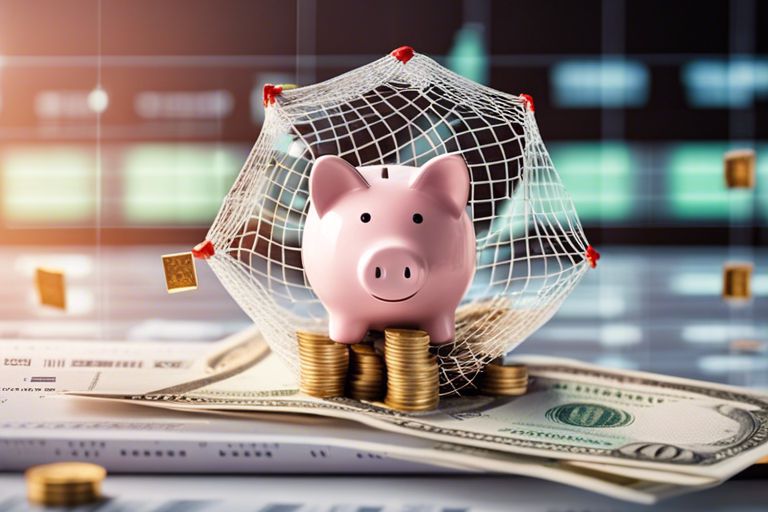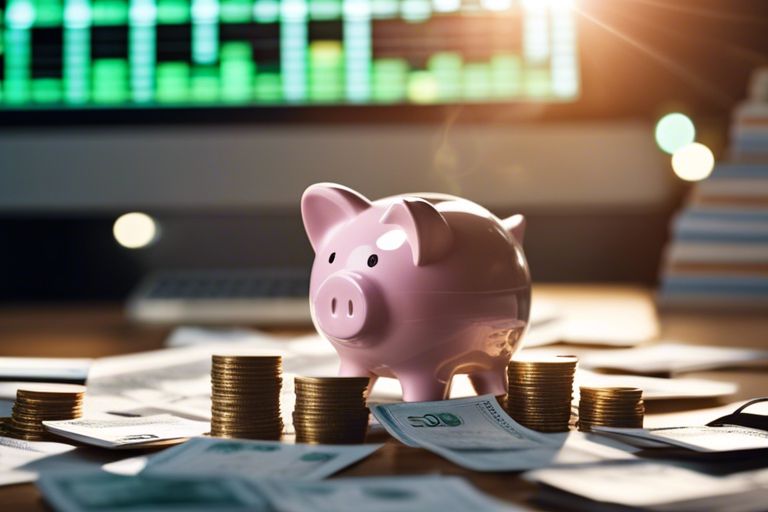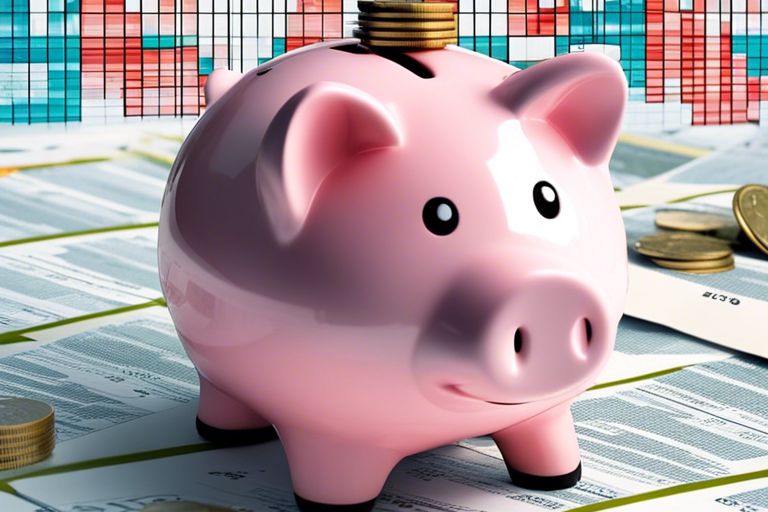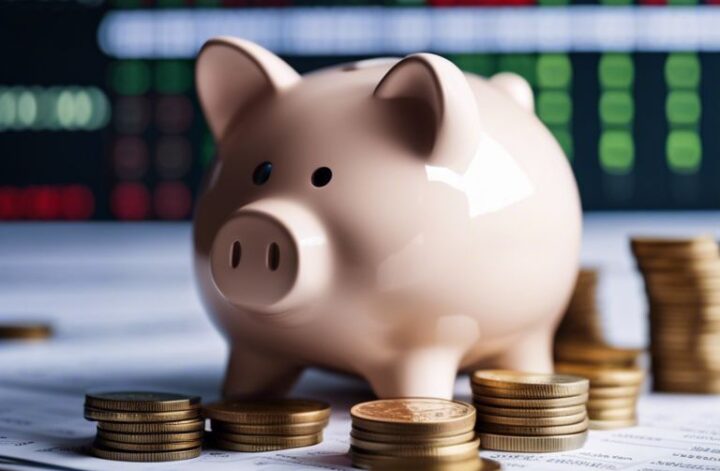This comprehensive guide will provide you with vital information on the importance of emergency funds and how to seamlessly integrate them into your budget for enhanced financial security. This subject is crucial for anyone looking to take control of their finances and prepare for unexpected expenses.
An emergency fund serves as a financial safety net, allowing you to cover unexpected expenses without jeopardizing your financial stability. By strategically budgeting for an emergency fund, you can protect yourself from unforeseen events such as job loss, medical emergencies, or car repairs. This guide will outline key steps to help you establish and maintain a robust emergency fund, ensuring that you are prepared for any financial challenges that may come your way.
Key Takeaways:
- Emergency funds are crucial for financial security: Having an emergency fund in place can help you navigate unexpected expenses or income disruptions without derailing your financial stability.
- Allocate a set amount for your emergency fund in your budget: Treat your emergency fund as a non-negotiable expense in your budget, just like rent or utilities.
- Build your emergency fund gradually: Start small and gradually increase the amount in your emergency fund until it covers at least 3-6 months of living expenses.
- Use automated transfers to simplify savings: Set up automatic transfers from your checking account to your emergency fund to ensure consistent contributions.
- Replenish your emergency fund after withdrawals: Whenever you dip into your emergency fund, make it a priority to replenish the amount as soon as possible to maintain its effectiveness.
Assessing Your Financial Situation
Some of the key steps in building a robust emergency fund involve evaluating your current financial standing and understanding your expenses. To dive deeper into this topic, check out the Emergency Fund: How to Build the Best Safety Net resource for comprehensive guidance on creating a secure financial foundation.
Inventory of Current Assets and Liabilities
Clearly identifying your assets, such as savings accounts, investments, and valuable possessions, along with your liabilities, such as debts and outstanding loans, is crucial. This inventory provides a holistic view of your financial health and serves as the basis for determining the size of your emergency fund.
How Expenses Influence Emergency Fund Needs
While examining your expenses, consider both important costs, like rent and utilities, and discretionary spending, such as shopping or dining out. Ensuring that your emergency fund aligns with your monthly expenses can help sustain you during unforeseen financial challenges and prevent you from dipping into other sources of funds.
Fundamentals of Building an Emergency Fund
While having a budget is important for managing your finances, having an emergency fund is equally important for financial security. An emergency fund serves as a safety net to help you cover unexpected expenses without having to rely on credit cards or loans. It provides peace of mind knowing that you have funds set aside for any unforeseen circumstances that may arise.
How-to Set Clear Savings Goals
Building an emergency fund starts with setting clear savings goals. Determine how much you want to save for emergencies based on your monthly expenses, income, and financial obligations. Consider factors such as job stability, health insurance coverage, and any potential expenses, such as home repairs or medical emergencies. For more details, check out Building an Emergency Fund: Your Financial Safety Net.
Tips for Determining the Size of Your Emergency Fund
Tips for determining the size of your emergency fund can vary based on individual circumstances. It is commonly recommended to save three to six months’ worth of living expenses in your emergency fund. Factors such as job stability, number of dependents, and any outstanding debts can influence the size of your emergency fund. Start by listing all your monthly expenses and multiplying that amount by the number of months you want to save for. Recognizing the importance of building a sufficient emergency fund is key to financial preparedness.
- Consider your monthly expenses, including rent or mortgage, utilities, groceries, and insurance premiums.
- Factor in any other potential expenses, such as car repairs, medical bills, or unexpected travel costs.

Effective Budgeting Strategies
All individuals, regardless of their financial situation, can benefit from having an emergency fund. This safety net is crucial in times of unexpected financial hardship. For a comprehensive guide on how to start and build your emergency fund, check out Emergency Fund: What It Is And How To Start One.
Integration of Emergency Funds Into Your Monthly Budget
With the unpredictability of life, having a dedicated category in your monthly budget for your emergency fund is crucial. It ensures that you prioritize saving for unexpected expenses alongside your other financial obligations. By incorporating regular contributions into your budget, you are actively building a financial safety net for future emergencies.
Tips for Prioritizing Contributions to Your Fund
An effective way to prioritize contributions to your emergency fund is to treat it as a non-negotiable expense. Consider automating transfers to your fund on a regular basis to ensure consistency in saving. Additionally, allocating windfalls such as tax refunds or bonuses directly towards your emergency fund can help boost savings significantly.
- Set a specific savings goal for your emergency fund to stay motivated.
- Consider adjusting your budget to increase contributions if possible.
- Any extra income, such as a side hustle or freelancing gigs, can be allocated towards your emergency fund to expedite its growth.
This disciplined approach to saving can provide peace of mind and financial security in times of need. By actively prioritizing contributions to your emergency fund, you are taking proactive steps towards a more stable financial future.

Sources and Vehicles for Your Emergency Fund
Traditional Savings Accounts vs. High-Yield Options
To build an emergency fund, you have several options to consider. Traditional savings accounts offered by banks can provide a safe and easily accessible place to store your emergency fund. While these accounts typically offer lower interest rates compared to high-yield options, they are a reliable choice for short-term savings.
Considering Money Market Accounts and Certificates of Deposit
For those looking to potentially earn higher returns on their emergency fund, money market accounts and certificates of deposit (CDs) are worth considering. Money market accounts typically offer higher interest rates than traditional savings accounts, with some even providing check-writing capabilities for added liquidity. CDs, on the other hand, are time deposits that offer fixed interest rates for a specified period, making them a good option for those who can afford to lock away their funds for a set duration.
For increased flexibility and higher potential returns, combining traditional savings accounts with high-yield options like money market accounts and CDs can create a well-rounded emergency fund portfolio that balances accessibility with growth potential.
Overcoming Challenges and Obstacles
How-to Address Common Setbacks When Saving
Many individuals face challenges and obstacles when trying to save for an emergency fund. One common setback is unexpected expenses such as medical bills or car repairs, which can derail savings goals. To address this, consider creating a separate sinking fund specifically for these types of expenses to avoid tapping into your emergency fund.
Tips for Staying Motivated Despite Financial Hurdles
Saving for an emergency fund can be a daunting task, especially when faced with financial hardships. However, staying motivated is necessary for long-term financial security. One effective tip is to set mini milestones and celebrate each achievement, no matter how small. This can help you stay focused and encouraged on your saving journey.
After addressing setbacks and staying motivated, achieving your goal of building an emergency fund becomes more attainable. To keep your financial goals on track, consider implementing additional strategies like setting up automatic transfers to your savings account or practicing mindful spending habits.
For instance
Creating a visual reminder of your savings goal, such as a vision board or progress chart, can also serve as a powerful motivator. Additionally, seeking support from friends or family members who can hold you accountable and offer encouragement can make a significant difference in your savings journey.
Emergency Fund Maintenance and Growth
Once again, consistency is key when it comes to maintaining and growing your emergency fund. Regularly assessing and adjusting the amount you set aside can ensure that you are adequately prepared for unexpected expenses.
Factors Influencing Fund Adjustments
- Changes in income or expenses
- Financial goals and priorities
- Economic conditions
Recognizing these factors can help you make informed decisions about when to contribute more to your emergency fund or when it may be necessary to tap into it for unforeseen circumstances.
Strategies for Growing Your Emergency Fund Over Time
Some effective strategies for growing your emergency fund include setting specific savings goals, automating contributions to your fund, and adjusting your budget to prioritize saving. If you receive a windfall, consider allocating a portion of it towards your emergency fund to accelerate its growth.
Growing your emergency fund over time can provide a sense of financial security and peace of mind. By consistently contributing to your fund and utilizing smart savings strategies, you can be better prepared to handle unexpected financial challenges.
Advanced Tips and Best Practices
Despite the importance of emergency funds, many people struggle to save up enough for a financial safety net. However, by following some advanced tips and best practices, you can better prepare yourself for unexpected expenses and financial emergencies.
-
How-to Automate Your Savings
Automate your savings Set up automatic transfers from your checking account to your emergency fund on a regular basis. This can help you consistently contribute to your savings without having to think about it. Use apps and tools Utilize budgeting apps and tools that can help you track your expenses and set savings goals. Some apps even have features that round up your purchases to the nearest dollar and deposit the spare change into your emergency fund. -
Tips for Protecting Your Emergency Fund From Inflation
Invest in high-yield savings accounts Consider moving your emergency fund to a high-yield savings account to earn a higher interest rate and protect your savings from inflation. Diversify your investments Explore investment options like bonds or index funds to potentially earn a higher return on your emergency fund compared to a traditional savings account.
How-to Automate Your Savings
Automate your savings by setting up automatic transfers from your checking account to your emergency fund on a regular basis. By putting your savings on autopilot, you’re more likely to consistently contribute to your emergency fund without even thinking about it. This simple strategy can help you build up your savings over time and ensure you have a financial safety net in place for any unexpected expenses.
Tips for Protecting Your Emergency Fund From Inflation
From investing in high-yield savings accounts to diversifying your investments, there are various strategies you can employ to protect your emergency fund from the eroding effects of inflation. One effective way is to move your emergency fund to a high-yield savings account that offers a better interest rate than a traditional savings account. By earning a higher return on your savings, you can keep pace with or even outpace inflation, ensuring that your emergency fund retains its purchasing power.
For instance, consider diversifying your investments by exploring options like bonds or index funds. These investment vehicles may offer higher potential returns compared to a standard savings account, helping your emergency fund grow over time. By diversifying your investments, you can mitigate risk and potentially earn a greater return on your savings, safeguarding your financial security in the long run. Thou shalt diligently monitor and adjust your investment strategy to ensure your emergency fund remains protected from inflation and continues to grow.

Final Words
The importance of emergency funds cannot be overstated when it comes to financial security. By having a dedicated fund set aside for unexpected expenses, you can protect yourself from financial hardship and stress. Integrating emergency funds into your budget is necessary for creating a solid financial foundation and ensuring you are prepared for any unforeseen circumstances that may arise.
Be mindful of, building an emergency fund takes time and discipline. By carefully planning and budgeting for this safety net, you can safeguard your financial well-being and gain peace of mind knowing you are prepared for whatever life may throw your way. Start small, stay consistent, and watch your emergency fund grow into a valuable financial asset that provides security and stability in times of need.




